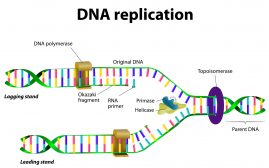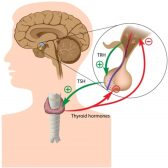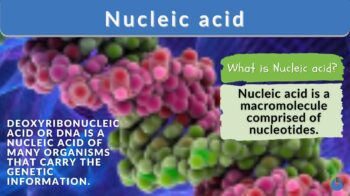
Nucleic acid
n., plural: nucleic acids
[njuːˈkliː.ɪk ˈæsɪd]
Definition: A biological macromolecule comprised of monomers of nucleotides
Table of Contents
Nucleic Acid Definition
A nucleic acid refers to any of the group of complex compounds consisting of chains of monomers of nucleotides. Each monomeric unit is composed of phosphate group, sugar, and nitrogenous base. Nucleic acids are involved in the preservation, replication, and expression of hereditary information in every living cell.
Nucleic acids are essential biomolecules in molecular biology, serving as the blueprints of life. Nucleic acid refers to a sequence of nucleotides that functions as a storage medium for genetic information in living organisms. It plays a vital role in the creation of DNA and RNA, which are responsible for storing the necessary information to produce proteins. Indeed, the genetic information is encoded using codons, which consist of sets of three nucleotides.
Watch this vid about nucleic acid:
Biology definition:
A nucleic acid is a biomolecule that stores and transmits genetic information in living organisms. Nucleic acids are composed of nucleotides, which, in turn, are made up of sugar, phosphate group, and nitrogenous base. There are two types of nucleic acids: deoxyribonucleic acid (DNA) and ribonucleic acid (RNA).
Overview:
A biomolecule refers to any molecule that is produced by living organisms. As such, most of them are organic molecules. The four major groups of biomolecules are amino acids and proteins, carbohydrates (especially, polysaccharides), lipids, and nucleic acids.
Common biological reactions:
DNA carries the genetic information that codes for a particular protein. Thus, during protein translation, the genetic code for a protein is first copied into the RNA (specifically, mRNA). This process of creating a copy of DNA into mRNA through the help of the enzyme RNA polymerase is called transcription. Although RNA polymerase traverses the DNA template strand from 3′ → 5′, the coding (non-template) strand is usually used as the reference point. Hence, the process proceeds in the 5′ → 3′ direction, like in DNA replication. However, unlike DNA replication, transcription does not need a primer to start and it uses base pairing to create an RNA copy containing uracil instead of thymine. In prokaryotes transcription occurs in the cytoplasm whereas in eukaryotes it takes place primarily in the nucleus before the mRNAis transported into the cytoplasm for translation or for protein synthesis. The degradation of nucleic acids yields purines, pyrimidines, phosphoric acid, and a pentose, either D-ribose or D-deoxyribose.
History
The discovery of nucleic acid is credited to Friedrich Miescher, a Swiss scientist, who first identified and named it nuclein in 1869 while he was studying at the University of Tübingen, Germany. Miescher postulated that this substance might be involved in heredity.
Albrecht Kossel, in the early 1880s, continued the research by further refining the substance and identifying its acidic properties and nucleobases. In 1889, Richard Altmann coined the term “nucleic acid” to describe the substance, without differentiating between DNA and RNA.
In 1938, researchers Astbury and Bell achieved a significant breakthrough by unveiling the inaugural X-ray diffraction pattern of DNA. Subsequently, in 1953, scientists Watson and Crick proposed the revolutionary concept of the DNA double helix structure.
Another critical milestone occurred in 1944 when the Avery-MacLeod-McCarty experiment provided compelling evidence to establish that DNA molecules serve as the repositories of genetic information. These landmark contributions collectively paved the way for our enhanced understanding of the fundamental nature and function of DNA.
These discoveries laid the groundwork for the current biomedical and biological research that has led to the development of fields like forensic science, genome analysis, and the pharmaceutical and biotechnology industries.
How Nucleic Acids Work
As the name indicates that nucleic acids are very acidic, donating protons and easily accepting pairs of electrons during chemical reactions, hence the name. Nucleic acids are polymers or long chains of nucleotides. They store and transmit genetic information, like a hard drive containing a program’s basic instructions (the “source code”) for building a cell.
It has long been a goal of scientific inquiry to discover how organisms acquire the information necessary for growth and survival, and how traits are passed down from generation to generation. The solution was found in the naturally occurring DNA commonly referred to as deoxyribonucleic acid, which is present in the cell nucleus and transmitted from parent to progeny cells. When DNA molecules are damaged or transmitted inaccurately, cells may not function properly, leading to developmental abnormalities, or even cell death.
Additional investigation revealed that RNA, also known as ribonucleic acid, can perform the same functions as nucleic acid. RNA is capable of performing the “messenger” role, which involves it copying the instructions contained in the DNA sequence and transferring them to other regions of the cell. RNA is also involved in the generation-to-generation transmission of genetic information in certain viruses.
RNA polymerase is an enzyme that plays a crucial role in the process of transcription, where the genetic information stored in DNA is copied into RNA molecules. It binds to the DNA template strand and adds nucleotides in a complementary manner to form a single-stranded RNA molecule. RNA polymerase can recognize specific DNA sequences, known as promoters, which initiate the process of transcription.
Different types of RNA polymerases are responsible for the synthesis of most RNA molecules, such as messenger RNA (mRNA), transfer RNA (tRNA), and ribosomal RNA (rRNA). RNA polymerase is a highly regulated enzyme, with various factors controlling its activity and ensuring the accurate transcription of genetic information.
The sugar molecules in DNA and RNA are deoxyribose and ribose, respectively, with carbon atoms forming the backbone of the nucleic acid structure. In certain instances, nucleic acids can adopt circular configurations, such as circular molecules of DNA found in plasmids.
Types
Nucleic acids are naturally occurring chemical compounds found in all living organisms. There exist three primary classifications of nucleic acids, namely DNA, RNA, and artificial nucleic acid.
Deoxyribonucleic Acid
DNA double helix (DNA sequences) is a stranded molecule that consists of units called nucleotides. The molecules form a sugar molecule with a hydroxyl group, a phosphate group (phosphate groups, two phosphate groups), and a nitrogenous base which is connected by ester bonds. The hydrogen bonds between complementary base pairs, such as A-T and C-G, stabilize the DNA helix. Nucleotides encode specific genetic instructions within DNA segments.
In DNA sequencing the 04 nitrogenous bases are:
DNA carries the genetic information that determines the characteristics of an organism. The sequence of the nitrogenous bases in DNA is like a code that determines which proteins are produced in a cell.
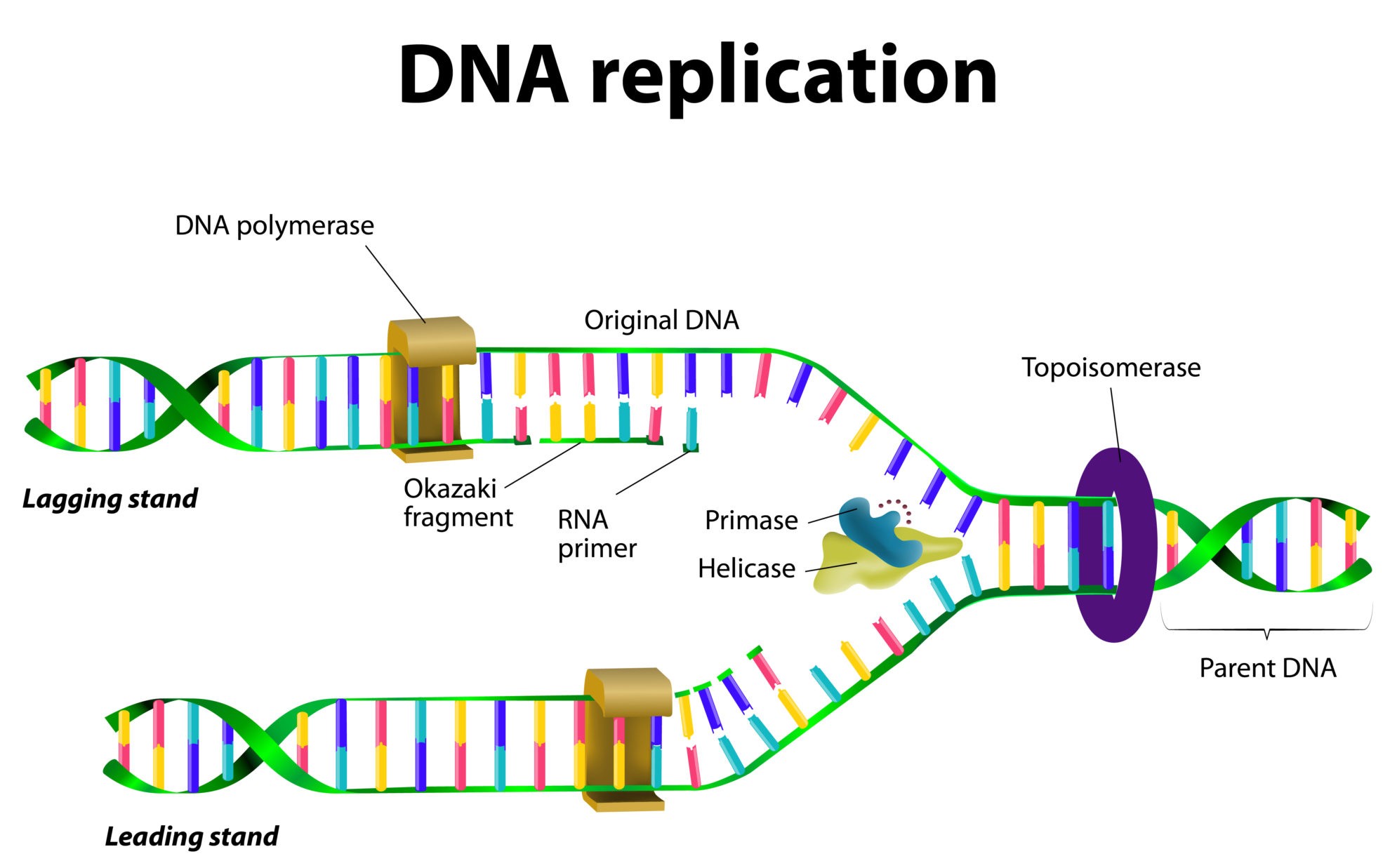
Ribonucleic Acid
RNA, also known as ribonucleic acid, is a nucleic acid molecule that participates in a variety of biological processes, much like DNA. DNA typically exists in a double-stranded helical structure, whereas RNA is predominantly single-stranded. However, there are certain instances where RNA molecules can fold back upon themselves and form secondary structures. The ribose molecule of sugar, the phosphate group, and the nitrogenous base make up the nucleotides that make up RNA.
The four nitrogenous bases of RNA
- Adenine (A)
- Guanine (G)
- Cytosine (C)
- Uracil (U)
The RNA molecule, in contrast to DNA, has uracil rather than thymine.
Types of RNA
The types of RNAs are as follows:
- Messenger RNA (mRNA)
- Transfer RNA (tRNA)
- Ribosomal RNA (rRNA)
» Messenger RNA (mRNA): Messenger RNA (mRNA) is a single-stranded molecule that plays a pivotal role in the process of protein synthesis. The messenger RNA (mRNA) molecule facilitates the transfer of genetic material from the DNA, which is situated in the cell nucleus, to the ribosomes located in the cytoplasm. The ribosomes are responsible for protein synthesis.
» Transfer RNA (tRNA): During the formation of proteins, the ribosome receives a particular amino acid via tRNA, a single-stranded molecule. The anticodon on each tRNA molecule recognizes a complementary sequence of bases on the mRNA and binds to them. Each tRNA has a unique anticodon sequence that specifies which amino acid it will transport.
» Ribosomal RNA (rRNA): rRNA is responsible for directing protein synthesis. The ribosome is made up of two subunits, each of which contains rRNA as well as other proteins. During protein synthesis, the rRNA molecules in the ribosome act as catalysts, facilitating the synthesis of amino acids into peptide chains.
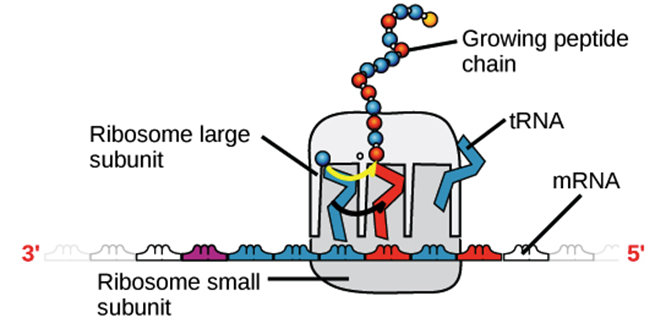
Artificial Nucleic Acid
Artificial nucleic acids are man-made nucleic acids that have been designed to have properties not found in natural nucleic acids. One of the most prominent types of artificial nucleic acids is peptide nucleic acid (PNA).
PNA shares structural similarities with DNA, but it distinguishes itself by replacing the sugar-phosphate backbone found in DNA with a peptide backbone. PNA is resistant to degradation by nucleases and can bind to complementary nucleic acid sequences with high affinity.
Another type of artificial nucleic acid is XNA (xeno-nucleic acid). XNA is a broad term that refers to any nucleic acid that is not composed of the natural nucleotides found in DNA and RNA. XNAs have potential applications in medicine, biotechnology, and synthetic biology.
DNA and RNA are the naturally occurring nucleic acids that can be found in all organisms that are alive. They are necessary components in the processes of storing and passing on genetic information. PNA and XNA are two examples of artificial nucleic acids that have been developed for a variety of purposes. These artificial nucleic acids offer features that cannot be found in naturally occurring nucleic acids.
Function Of Nucleic Acids
Below are some of the vital functions of nucleic acids.
Nucleic Acids Store Information Like Computer Code
Nucleic acids are extremely important components of organisms since they are responsible for transporting genetic information. These molecules can store information and replicate it. The binary code that is used in computers is a suitable analogy for the technique being described here. In binary code, strings of ones and zeros can be employed to create virtual realities.
Similarly, the genetic code found in DNA can build complete living beings. It is impossible for living creatures to function correctly in the absence of complete copies of their DNA “source code.” Due to the resemblance between genetic code and binary code, several scientists support the construction of “genetic computers.” however research in this field has garnered less attention in comparison to advancements in silicon-based hard drives.
Protecting The Information
A cell’s DNA source code needs to be shielded from any potential damage so that it may carry out its functions correctly. This is analogous to how a computer’s operating system is necessary for the device to function properly. RNA, which is a different kind of nucleic acid, is used to copy the information that is included in DNA so that the DNA’s instructions can be transported to other areas of the cell. The nucleus is responsible for copying genetic information into RNA, which is then exported from the cell and used as instructions by cellular machinery.
RNA is also used in the production of ribosomes, which is the cellular machinery responsible for protein synthesis, as well as some enzymes. DNA is shielded from the anarchic atmosphere of the cytoplasm by a layer of RNA, which performs the function of a protective mechanism. The possibility that the first forms of life were RNA molecules capable of self-replication and catalysis is supported by the dual roles of RNA as a hereditary material and an enzyme. Because the movement of cellular components might easily destroy the lengthy and complicated DNA strands outside of the eukaryotic nucleus, the DNA is guarded and preserved while it is contained within the nucleus.
Examples Of Nucleic Acids
DNA (deoxyribonucleic acid) and RNA (ribonucleic acid) are two fundamental types of nucleic acids that play critical roles in living organisms. These molecules are present in every single living thing, from bacteria to humans.
Two more notable examples are xeno-nucleic acids (XNAs) and peptide nucleic acids (PNAs), which have been created in the laboratory in addition to DNA and RNA.
The chemical structures of these artificial nucleic acids are distinct from those of DNA and RNA, and they have the potential to be utilized in a wide variety of contexts within the fields of biotechnology and medicine.
Nucleic Acids And Genetics
Let’s take a closer look at the genes in terms of the genetic code and nucleic acids as polymers of nucleotides.
The Genetic Code
Nucleic acids are literal source codes for cells. The characteristics of organisms can be modified through the use of genetic engineering by altering the DNA in various ways, such as by rewriting, removing, or adding parts of it. This affects the components that are produced by the cells. An expert genetic “programmer” may create a brand-new set of instructions for a living cell from scratch using the nucleic acid code and the right amount of information. Using a synthetic DNA synthesizer and bits of code retrieved from other cells, scientists were able to create a whole genome in 2010. For scientists, this was unexplored territory.
All living cells use nucleic acids as the medium through which they read and write the language that makes up their source codes. Codons are trinucleotide sequences that can represent any amino acid or indicate the start or stop of protein synthesis.
Evolutionary theory suggests that all current life on Earth descended from a single ancient cell. Nucleotides are chemical compounds that have a sugar with five carbons, a phosphate group, and a nitrogenous base.

Nucleic Acids Are Polymers Of Nucleotides
Both DNA and RNA are instances of lengthy chain polymers that are constructed from their component nucleotides. In this context, it is meant that the term “polymer” refers to the composition of multiple nucleotides strung together to form a single molecule of nucleic acid.
Some scientists believe that the initial self-replicating sequence of amino acids that led to the birth of life on Earth may have been nucleic acid. Nucleic acids may be created by natural chemical reactions, and some scientists believe that this sequence was nucleic acid. This argument receives additional backing from the discovery of nucleic acids in meteorites; this finding lends credence to the idea that even in settings devoid of living organisms, natural processes are capable of producing complex compounds like nucleic acids.
The theory that meteorites containing nucleic acids may have played a role in the origin of life on Earth has been proposed. This hypothesis suggests that organic molecules, including nucleic acids, could have been delivered to Earth via meteorite impacts. These extraterrestrial organic compounds could have provided the building blocks necessary for the development of early self-replicating nucleic acid systems, however, at present, no data can definitively support this theory.
Nucleic Acid Structure
Nucleic acids are made up of nucleotides, which consist of a sugar, a phosphate group, and a nitrogenous base. The sugar in DNA is deoxyribose, while the sugar in RNA is ribose. The sugar phosphate backbone is a repeating pattern of sugar and phosphate groups that forms the structural framework of nucleic acids, such as DNA and RNA.
The nitrogenous bases in DNA are adenine, thymine, cytosine, and guanine, while in RNA, uracil replaces thymine. The nucleotides are linked together by phosphodiester bonds to form a chain, with the sugar and phosphate groups forming the backbone and the nitrogenous bases extending as side chains. The specific sequence of the bases in the nucleic acid chain determines the genetic information that is stored and transmitted. The double-stranded DNA molecule forms a double helix structure, with the nitrogenous bases paired by hydrogen bonds.
An RNA chain is a single-stranded molecule composed of ribonucleotides, which are linked together by phosphodiester bonds between the 3′ hydroxyl group of one ribose sugar and the phosphate group of the next. The RNA chain can vary in length and sequence depending on the gene being transcribed. The specific sequence of nucleotides in the RNA chain determines the information encoded in the RNA molecule, which can be translated into proteins or have other functional roles in the cell.
Monomer Of Nucleic Acids
The fundamental components of nucleic acids are called nucleotides (Adenine (A), Guanine (G), Cytosine (C), and Thymine (T).). The nitrogenous base and sugar-phosphate backbone are the two main components.
Nucleic acids are formed when nucleotides link together by exchanging oxygen molecules from the 3′ sugars of one nucleotide for the 5′ sugars of another. This takes place since the 5′ carbons in nucleotides can form numerous phosphate bonds. After bonding with the phosphates, the oxygen of the 5′ sugar takes the place of the 3′ oxygen molecule in the backbone of one nucleotide. A covalent bond forms, joining the two nucleotide monomers into a larger molecule.
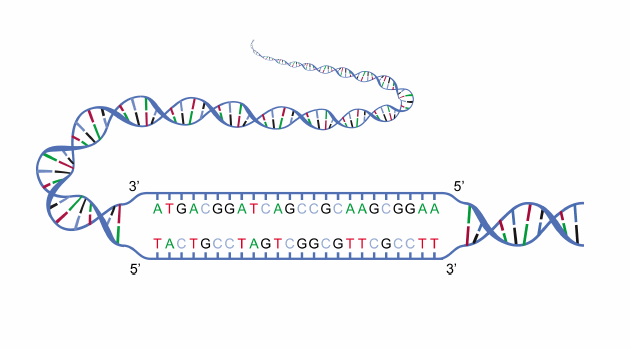
Indeed, nucleotides serve various important roles beyond their involvement in building nucleic acids. Two notable examples are their involvement in energy transfer and their contribution to intracellular signalling cascades.
Table 1: Differences Between DNA and RNA | ||
|---|---|---|
| DNA | RNA | |
| Structure | DNA is composed of two strands that twist together to form a helix, forming a ladder-like structure. Each strand consists of alternating phosphate (PO4) and pentose sugar (2-deoxyribose), and attached on the sugar is a nitrogenous base, which can be adenine, thymine, guanine, or cytosine. In DNA, adenine pairs with thymine and guanine with cytosine. Not all DNAs are double-stranded. For instance, a group of viruses have single-stranded DNA genome. | RNA consists of a long linear chain of nucleotides. Each nucleotide unit is comprised of a sugar, a phosphate group and a nitrogenous base. It differs from DNA in having ribose as its sugar, (deoxyribose in DNA) and the bases are adenine, guanine, cytosine, and uracil. In RNA, adenine pairs with uracil and guanine with cytosine. RNAs are single-stranded except for certain viruses whose genome consists of double-stranded RNA. |
| Location | In eukaryotes, most DNAs are located in the nucleoli and chromosomes in the nucleus. A small fraction of the total DNA is present in mitochondria, chloroplasts, and cytoplasm. In prokaryotes and viruses, DNA is found in the cytoplasm. | In eukaryotes, RNA is found in the nucleus and in the cytoplasm. In prokaryotes and viruses, it is found in the cytoplasm. |
| Function | DNA is a long polymer of nucleotides to code for the sequence of amino acid during protein synthesis. DNA carries the genetic ‘blueprint’ since it contains the instructions or information (called genes) needed to construct cellular components like proteins and RNAs. | In some viruses, RNA is the genetic material. For most organisms, RNAs are involved in: protein synthesis (e.g. mRNA, tRNA, rRNA, etc.), post-transcriptional modification or DNA replication (e.g. snRNA, snoRNA, etc.), and gene regulation (e.g. miRNA, siRNA, tasiRNA, etc.). |
Biological Importance
Nucleic acids contain the genetic information crucial for all cellular functions and heredity. Mutation in the genetic code could lead to metabolic disorders and diseases. Many of such disorders are due to a supposedly functional protein that apparently is insufficiently produced or has turned dysfunctional due to a mutation in the gene(s) coding for it. Many metabolic disorders and diseases are heritable since genes are passed on across generations. On the other hand, mutations are also necessary, evolutionary speaking. They increase variability of living things, enabling them to better adapt to the similarly changing environment.
NOTE IT!
“How did the discovery of nucleic acids revolutionize our understanding of genetics?”
The discovery of nucleic acids allowed scientists to understand that genetic information is stored and transmitted through these molecules. This led to the development of the central dogma of molecular biology, which explains how DNA is transcribed into RNA and then translated into proteins. It also provided a foundation for the study of gene regulation, genetic engineering, and the development of therapies for genetic disorders.
When nucleic acids are broken down, they produce purines, pyrimidines, phosphoric acid, and a type of sugar known as a pentose. The pentose can either be D-ribose or D-deoxyribose, depending on whether it is RNA or DNA that is being degraded.
Take the Nucleic acid – Biology Quiz!
Further Reading
- DNA Structure & DNA Replication
- Genetic Information and Protein Synthesis
- A Protein Being Born – a live cell imaging of RNA translation
- RNA-DNA World Hypothesis?
References
- Buckley, G. (15 Janurary 2021). Nucleic Acid. Retrieved 07 May, 2023, from https://biologydictionary.net/nucleic-acid/
- Chen, K., Zhao, B. S., & He, C. (2016). Nucleic acid modifications in regulation of gene expression. Cell chemical biology, 23(1), 74-85.
©BiologyOnline.com. Content provided and moderated by Biology Online Editors.


